 The laws of copyright and plagiarism don’t bother most authors very much. They know the laws exist but, because they aren’t copying the work of others, they don’t give them a second thought. However, there are two circumstances when we do have to think about that little c inside a circle, or at least the consequences of it. The first is inadvertent, or accidental plagiarism and the second is when our own work is plagiarised, or our work is stolen. Our brains retain a lot of what they take in, even when we don’t realise it. I’m sure we have all experienced the moment when we think we have met someone before, because their face seems familiar.  We are probably right, because their features have lodged themselves in our memory without us even being aware of it, however fleeting the original encounter. So it is with what we read. We may have read a book forty years ago (if we are old enough) but bits of it may appear in our conscious mind unbidden, without us knowing where they have appeared from. What may appear to be an original thought is actually something remembered from the book we read all that time ago. So, by including that thought in our book, we are inadvertently plagiarising the work of someone else. The second instance is more likely, and more serious, for most authors. 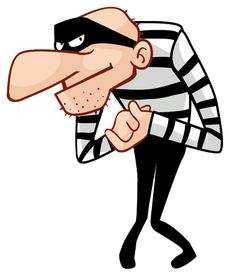 If parts of our book appear in someone else’s work, we have a right to feel aggrieved. Worse, if someone steals our whole book and publishes it under their name (or, more likely, a pseudonym), we have the right to feel very, very aggrieved. So, what do the laws of copyright say? They vary from country to country, so I can only generalise here. But all copyright laws are designed to protect the work of the originator while they are alive and for some period after their death as part of their estate. At the moment Britain is still working under EU copyright law, which protects the work of the author for 70 years after their death, or for 70 years after the death of the last surviving author of a co-authored work. So, if you co-author a book, it is protected for 70 years after the death of whichever author dies last.  Under American copyright law for work created after 1st January 1978, the work is also protected for 70 years after the death of the author or last surviving co-author. Work created prior to that date is subject to different periods of protection, depending on the law at the time the work was created. The majority of countries agree to uphold the copyright laws of other countries.. That means a British author can be sued in the UK for a breach of copyright that occurs in the USA, and vice versa, so don’t be fooled into thinking you are safe just because you break the laws in a country in which you don’t live. While that looks good on paper, not all countries agree to co-operate or turn their agreement into action  Once the copyright period has expired, the work becomes “public domain”. This doesn’t mean anyone can just claim the work as their own, because that would still be plagiarism. But it does mean that anyone can publish the work under the original author’s name and not have to pay anything to the deceased’s estate. Authors often use photographs or artwork to illustrate their books, or their book covers, and those images may be (probably are) subject to copyright. If you didn’t create the art or take the photograph, then you haven’t got permission to use it. You must obtain the permission of the originator or purchase a licence to use it. Companies like Shutterstock and Depositphotos sell licenses to use the work of the people who created the images that are displayed on their websites. If you get your images from some other sources you may have to dig around to find out how to obtain permission to use them or to buy a licence. Incidentally, licences to use images are usually limited to a maximum number of hard copies, so make sure you know what the limit is so that you don’t accidently exceed it. Renewing the licence for more copies is usually cheaper than the original cost.  It is very easy to breach the copyright for images without realising you are doing it. Let me illustrate (bad pun) by using an example. Let’s imagine that I want to illustrate this blog with an image of the Mona Lisa. Now, Leonardo da Vinci has been dead for several centuries, so his best known work is clearly public domain. However, any photograph of the Mona Lisa may be subject to copyright. Given the “70 years after death” rule, it could mean a photo taken as early as 1923 (possibly even earlier) is still under copyright, if the photographer died after 1953. Photos held in archives or printed in newspapers and magazines are always subject copyright and companies like Getty Images buy the copyright for photographs in private collections and make money by selling licences to use them. Many a blogger and/or author has fallen foul of the law because they didn’t realise any of that. 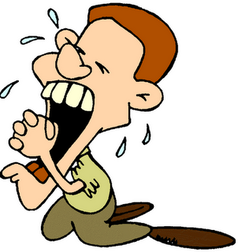 So, what happens if you commit an inadvertent act of plagiarism? Well, once you have read the work you are alleged to have plagiarised and confirmed that your story is so similar to it that it isn’t really your story, then a profuse and sincere apology and the withdrawal of the book from sale is usually enough to satisfy the original author. That doesn’t prevent the original author from taking legal action, but the fuss and cost involved usually means that they won’t involve the courts. However, in the UK if you deny that your work is based on theirs, they can take you to a Copyright Tribunal (see more below), which costs only £50. Dan Brown has been sued three times over accusations of plagiarism in his Robert Langdon novels, though none of the suits against him have been won. But some American lawyers are getting very rich from these lawsuits. If you were to lose a lawsuit, it could cost you everything you have – and I do mean everything.  However, even if you admit your mistake and avoid a lawsuit, your publisher will have suffered a financial loss as a result, so they may (probably will) reclaim any advance of royalties that was paid and also claim back any costs they incurred in publishing your book. You may end up severely financially damaged anyway even if you admit your error. So, when you have that great thought for your book, do make sure that it is an original thought and not a memory of someone else’s work, resurrected from the deepest recesses of your brain. What to do about someone plagiarising or actually stealing your work is more complex. Let’s take plagiarism to start with. Most authors can’t afford to take legal action, so they need to take a diplomatic approach first. 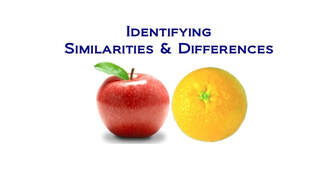 The first step is to “compare and contrast” the two books. Ideas can’t be copyrighted, so the fact that you had the idea to locate your story on a planet a thousand light years from Earth, which is populated by Green Pixies, and the other author did the same, is not proof of plagiarism. You have to be able to prove that the story is substantially the same as yours throughout. That means going chapter by chapter and identifying the similarities – and the differences. The greater the ratio of similarities to differences, the stronger your case, and vice versa. You also have to be able to prove that your book was copyrighted and published before the other version, which is why having a copyright date included in your book is so important. If the book has been published by more than one publisher, which sometimes happens, then it is the first publication date that is the important one, not the latest date. Because of the time it takes to write and then publish a book, the publication date could be years after the copyright date.. The next thing to do is to try to contact the author, point out the similarities with your work and ask them, politely, to withdraw the book. You shouldn’t accuse them of plagiarism, because that could provoke a counteraccusation of slander. 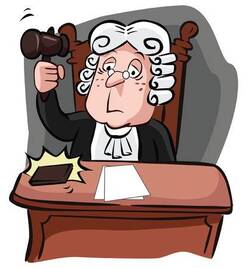 In the UK the Copyright Tribunal will examine cases of copyright theft and plagiarism. Contact them before you do anything more. Present them with all your evidence. Their email address is c[email protected] Other countries may operate similar forms of copyright dispute resolution, so check your own government’s websites. We’ll assume that the tribunal has found in your favour, so if the other author denies the similarities or refuses to remove the book despite the tribunal’s ruling, then a solicitor’s (lawyer’s) letter will usually do the trick. The threat of legal action, backed by the tribunal’s findings and with the accompanying financial consequences, is usually enough to make the other party see sense. A solicitor’s letter can cost anything from £30 (plus VAT) upwards, depending on how much time the solicitor has to spend on it. Ask the solicitor how much they expect the cost to be before you commit yourself.  However, if the letter fails to achieve the desired result, don’t go to court just yet. Instead, contact the retailers (this could be quite a few businesses) and ask for the book to be removed from sale. If the Copyright Tribunal has found in your favour you will have a strong case. If they didn’t, the retailers may decide to do their own investigations before removing the title from sale. If the retailers don’t agree with you, you have a choice: take the risk of legal action or just suck it up and let it go. If you have deep pockets you may decide to stand on your principles and go to court, but for most authors the consequences of losing are too high. 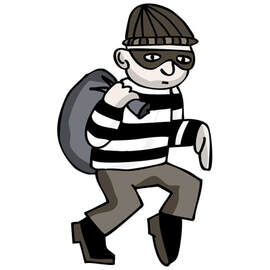 What about the direct theft of your work by someone who has published it under another name? Well, it is unlikely that you will ever be able to track the thief down. They know they have broken the law, so they will have done their best to conceal their identity. Copyright theft is a “civil” offence, not a criminal one, so the police won’t get involved. Tracking the thief down yourself isn’t really an option. You simply don’t have the resources necessary. Even if you make progress, the trail will probably end in a country that isn’t very good at co-operating on international law and you are entering the lottery of a legal system with which you are unfamiliar, and which may be unsympathetic to your case. If you have used the Copyright Tribunal, mentioned earlier in the blog, their adjudication can be used to require retailers to remove the offending books. The publisher (if you have one) or retailer(s) may decide to pursue the thief because of their financial losses, but that is unlikely. 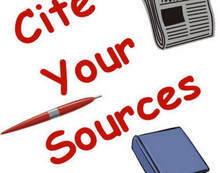 There is one more word of caution I must offer. It is quite common to quote the work of other people in your otherwise original work. There are circumstances when you may do that, providing it is properly credited, but these mainly relate to non-fiction and academic works. You may also do that if you are critiquing the work, reviewing it or using it for the purposes of parody or sarcasm. The relevant clauses in the law are known as “fair use” or “fair dealing”. The rule is to keep the quotes as short as is necessary to get the message across and to make sure you credit the originator. Just naming the originator may not be enough, you may have to provide a full reference to the publication, date of publication, publisher etc. This website provides guidance on how to cite your sources. 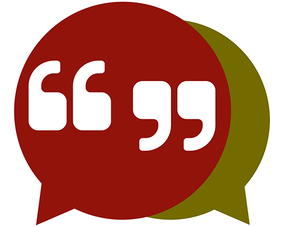 It is quite common to see quotes of the lyrics of songs or lines of poetry at the start of a book or at the beginning of chapters, as they usually convey some message that is relevant to the story. You must obtain the consent of the originator of the words if you wish to use them in that way. Some poets, authors and songwriters will give that freely, but many require payment. The music industry is particularly litigious when it comes to the use of song lyrics without permission. If you plan to use quotes like that and don’t ask permission, you do so at considerable financial risk. At the very least you will probably have to delete the offending words from the book and re-publish it without them. So, that brings us to the end of our quick gallop through the world of plagiarism and copyright law. We hope you found it interesting and now have a better idea of what you can and can’t do. However, I include links to more authoritative sources if you want to know (yawn) more. For the UK: https://www.legislation.gov.uk/ukpga/1988/48/contents For the USA: https://www.copyright.gov/title17/ If you have enjoyed this blog, or found it informative, then make sure you don’t miss future editions. Just click on the button below to sign up for our newsletter. We’ll even send you a free ebook for doing so.
0 Comments
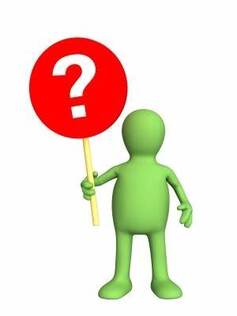 Why aren’t my books selling? It’s a question that we hear many authors asking, especially on Twitter (Good old Twitter – we’d be stuck for blog ideas without it it). Well, first some expectation management. There are a thousand reasons why a book might not be selling, so it is impossible to answer that question for any individual book in a simple blog. All we can do is look at some generalities and let you compare and contrast those with your book and your marketing to see what conclusions you can draw. But those generalities are important, as they may point you towards the single reason your book may not be selling. You will have to identify and address the precise issue, but at least you will be closer to the right answer than you would be if you hadn’t read this blog. 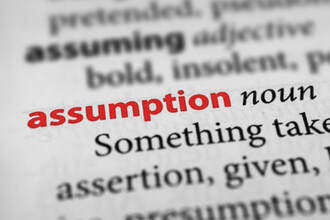 We are going to start with two assumptions. We will be discussing marketing later in the blog, but our starting point assumes that you have done some marketing, which has led to a potential reader finding their way to the Amazon page for your book. If you don’t sell through Amazon (Why not? They account for 80% of ebook sales!) then the same basic messages apply to other on-line book selling sites. The second assumption (and it is the big one) is that your book is actually up to the required quality. Your Beta readers will have told you that. Sadly, your family and friends probably won’t tell you if it wasn’t, because they don’t want to hurt your feelings. If you haven’t used Beta readers, or you haven’t acted on Beta reader feedback, you are entering a lottery and nothing we can say will change that. You may find it helpful to have your Amazon (or whatever) sales page open in another tab, so you can flip between it and this blog to see what we are talking about. So, what is the first thing a potential reader will see when they click on a link to take them to your book’s sales page? Cover image 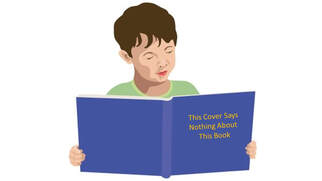 We blogged about cover design just a couple of weeks ago, so we aren’t going to go over that ground again. I think it is safe to say that if your book showed up in someone’s search results, they must have found the cover appealing enough to click on the link or they wouldn't be looking at the book's sales page. But what if they didn’t click on the link? If you have been running an advert for your book, you will have data from the results to tell you how many clicks you got (a 10% conversions rate is good). If you aren’t getting enough clicks, your cover design may be part of the problem. But if you haven’t run any ads, you won’t know. You may want to scroll down and read that blog about cover designs, just in case. 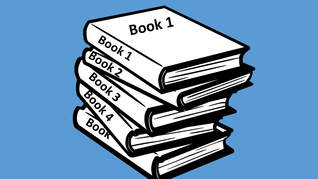 Title A lot has been written about titles, with many gurus suggesting titles should be short. All we can say is that “Dune” was a best seller and so was “The Curious Incident Of The Dog In The Nighttime”. You can draw your own conclusions with regard to the impact of title length on sales. We don’t think it is a critical factor unless you have used words that might alientate the reader. Price I’ve said it before, but I’ll say it again, if you aren’t J K Rowling, you can’t charge J K Rowling prices for your books. The ability to set their own price is one of the few competitive advantages that the Indie author has, so they need to use it. “I’m not going to under-sell my talent.” is an objection that is often raised when I say that.  OK, here are the facts. A mainstream published author only gets about 10% of the royalties from each sale. So, for a 9.99 ebook (forgive the lack of currency, it just saves me having to provide $, £ and other conversions), the author will only get about 1. But for a 5.99 ebook an Indie author will get between 1.75 and 3.50 (approx) depending on whether they took the 35% or the 70% royalty option. So, who is underselling their talent? The mainstream published author makes their money not from individual sales, but from total volume of sales. That is as much about having a big marketing budget as it is about having talent. Even some pretty bad writers (naming no names) can sell a lot of books if they have a big enough marketing budget behind them. You, on the other hand, aren’t making any sales, so no one knows about your talent and, if you insist on charging 9.99 for your books, they may never know about it. I’m actually surprised that more mainstream authors don’t opt for self-publishing once they have established their name – they would make far more money. Blurb 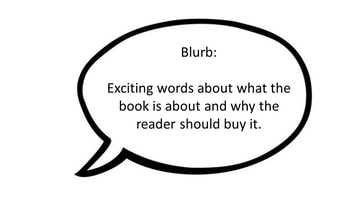 After price, this is the next crucial part of the sales page. If the reader is intrigued by the book’s blurb, they will either buy the book, or take the next step towards buying the book, which is to read the “Look Inside” portion. There are many blogs about blurb writing available, including some of our own and they all say pretty much the same thing. There are even books the subject (try Bryan Cohen’s). Google “How to write a good book blurb”, read what the blogs have to say and then make sure your own blurb is doing its job. If it isn’t, change it. “Look Inside” feature. If you have got the reader as far as looking inside the book, you are 90% of the way to making the sale. But it’s that final 10% that is the killer. If the “Look Inside” sample captures the reader’s interest, the sale is guaranteed. If it doesn’t then the reader will go and look somewhere else for their next book. 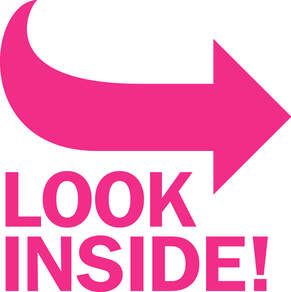 Once upon a time authors were permitted to take their time telling their story, using the opening chapters to create atmosphere and develop characters, before having to think about “inciting incidents”. Films, TV and computer games have changed all that. Nowadays you have to capture the reader’s interest within the opening few pages of the book and the “Look Inside” portion aids and abets that approach. If you fail to capture the reader’s interest, that 90% is all for nothing and you don’t make the sale. So, ask a few people, who you trust to give you an honest opinion, to read that “Look Inside” portion and then get them to tell you if they would buy the book if they didn’t know it was by you. It may still not provide a definitive answer, because they may not want to hurt your feelings, but if they are really good friends and really trustworthy, they will be honest. Reviews 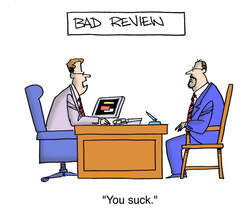 If the “Look Inside” portion of your book has done its job, readers may never look at the reviews it has been given. I almost never look at reviews myself, having made my decision based on the above factors. But some people do look at reviews, which is a problem if you don’t have any. You can pay for reviews. I’m not recommending it, but it’s your money. If you want to pay, that’s your call. But the real problem is bad reviews. There are two things to be done if you have a lot of bad reviews. A good reviewer will be helpful and provide reasons why they didn’t like your book, so learn from that. The first thing to look at, therefore, is what the reviewer said and then fix the problems. But that won’t get rid of the bad reviews, so there is a second thing you may need to consider. You may wish to “unpublish” the book from Amazon and re-launch it on another self-publishing site, such as D2D. The reviews on Amazon will no longer be seen and the book will start off on the new site with a clean slate. If you are already on multiple self-publishing sites, you really are stuck. Also, if you have bad reviews on Goodreads and other review sites, there is nothing that can be done about those. You may have to unpublish the book entirely and start anew by writing a brand new book. But use those reviews to learn from your mistakes, so the new book doesn’t suffer the same fate. An author who refuses to learn from their mistakes (or even admit they made any) will never sell books. Marketing  We said at the top of the blog that we would be discussing marketing, so here we are. However, this is too vast a subject to cover in one blog. We have written more blogs on this subject than on any other and we are still only scratching the surface in many aspects of the craft. The best thing we can advise is that you undertake some free training in marketing to help you market your books effectively. Effective marketing comes from knowledge, not luck. What we can do is summarise some of the key messages we have put out about this subject in the past. 1. No one is going to stumble on your book by accident. Marketing is not a choice – it is an essential. 2. Did you put the right “keywords” in into your book’s details on KDP? The most common way for people to find new authors on Amazon (or any site) is through searches using keywords. 3. Social media was a better marketing tool in the early days but is now largely past its “sell by” date. 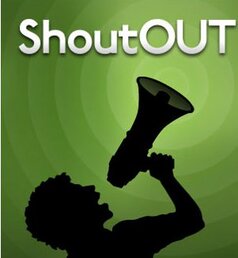 4. Blasting out Tweets to try to sell your book doesn’t work, so don’t pay people to do it. Social media users just scroll past those Tweets nowadays – or they block the username. 5. Social media is still a useful tool if you remember to use the "social" part correctly. 6. Paying for marketing services is an option – but only if you know which service is going to work for your book. You can’t cure a broken leg by taking an aspirin, so you have to know what is wrong with your marketing strategy before you pay someone to fix it, otherwise you risk trying to fix the wrong thing and throwing your money down the toilet.. 7. We’re sorry to have to be the bearers of bad news, but if you really want to sell books you are probably going to have to pay to advertise. We have found Amazon Ads and Facebook Ads to be the most cost effective. If you want to read any of those myriad blogs we have written on the subject of book marketing, you can find them in our archive. So, have you some inkling now about why your books aren’t selling? Maybe you haven’t found the final answer yet, but I hope we have shone a torch into the dark corners where you might find the final answer. If you have enjoyed this blog, or found it informative, then make sure you don’t miss future editions. Just click on the button below to sign up for our newsletter. We’ll even send you a free ebook for doing so.  Why do bookstore chains have big displays of book just inside their doors, showing the covers of the books that they are trying to sell that week? Firstly, the publishers are probably paying for the space that the display is taking up. But, more importantly, it is about the only place in a bookstore where it is possible to display the books so that the cover can be shown off. In the bookshelves themselves only the spines can be seen, with the odd book being turned “face outward” to show the front cover. Again, the publisher is probably paying to use that extra space.  There is an old saying amongst chefs that the first taste of a dish is with the eyes. Which is why chefs take so much care over the presentation of the food. It is sometimes a work of art in itself. "It LOOKS delicious." is something most of us have said in our time. And exactly the same rule applies to books. The first taste is with the eyes and the taster is the cover of the book. But instead of saying "It looks delicious" we say "It looks interesting". Cover design is something we have blogged about in the past, but we came across a book recently that reminded us of the importance of getting the cover right. Let me say up front that the book itself was excellent. It wasn’t published by us (more’s the pity), but we are happy to compliment the author on a job well done. One of our authors had been sent the book to review it, which is why he knew what it was about. We only became involved when the reviewer asked our opinion on the cover – which gave rise to this blog.  Just because a cover is artistic, it doesn't make it a good cover. Just because a cover is artistic, it doesn't make it a good cover. here was nothing wrong with the cover in artistic terms. The problem was that it didn’t say anything about the book. From the imagery it used, it wasn’t possible to know what genre the book was written in. The title didn’t tell us either. In a recent Tweet an author showed three potential covers for her latest book and asked followers which they preferred. I thought they all had a very dated, 1950s/60s, look about them and none of them excited my interest, despite the book being in a genre I read. I Tweeted back to say as much. She probably didn’t like the feedback, but better for the author to get it now than in several weeks’ time after the book has been published. The cover is the first thing a reader sees, regardless of whether it is a bookstore or on-line. The only place a cover isn’t required to make an impact is in a library, where all the books are displayed spine outwards, so only the title and the author’s name are visible. 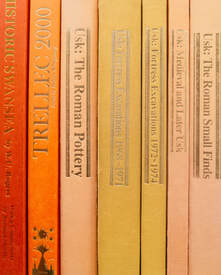 "Don't judge a book by its spine." "Don't judge a book by its spine." The quote from George Eliot (1819-1880), “Don’t judge a book by its cover” is actually a misquote. What she actually said was “Don’t judge a book by its spine”. There are pretty obvious reasons why that version is true. But readers constantly judge books by their covers. It is why publishers spend so much money on cover designs. So, the cover and the title combined must tell the reader everything they need to know about genre, so the reader knows that it is the sort of book they like to read. If that is the case, they will then read the blurb, or the “look inside” portion, or both, and the reader is well on the way to buying the book. If that initial impact isn’t made, the reader will move on to the next book on the shelf, or they will scroll on by to the next book in the search results. 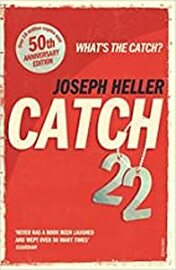 Joseph Heller's classic was already well known by the time this cover was used. Joseph Heller's classic was already well known by the time this cover was used. Authors choose their book titles for many reasons, and they don’t always say what genre the book is. From the title “Catch-22” you wouldn’t guess that the book was a satire on the way the United States Army Air Corp operated during World War II. It is more likely to suggest a book about baseball or cricket. The real genre only becomes apparent when you read the book. I’m sure that you can all think of other book titles that don’t suggest the genre of the book. Sometimes it is possible to guess because you know what sort of books are written by a particular author, but that isn’t a hard and fast rule either, because some authors write in multiple genres. But if it is an author’s first book, the reader has no idea what genre they write in. So, if the book’s title doesn’t suggest the genre and the author’s name isn’t familiar, then the book’s cover has to do a lot of work for the author if they want to capture the attention of a reader.  A lack of distinguishing features A lack of distinguishing features We went looking for other titles by the same author and, by accident, came across another problem. The book was the second in a series but the cover of the first book was so similar to that of the second that it is bound to create confusion for the reader. Our memories work far better with visual images than they do with text – and that is where the problem lay. With the exception of some minor differences in background colour, the cover of the second book was identical to the cover of the first book. The only major indication that the two books were different were the titles. Given what I have said about visual imagery taking precedence over text, readers are likely to recognise the cover image from the first book and think they have read the second book when they haven’t. If they have enjoyed the first book and would be prepared to buy the second book without knowing anything else about it, they might not buy for that reason. That’s a guaranteed sale that has been lost, because the cover caused confusion.  We can guess that the author was trying to establish a “brand identity” for the series and there is nothing wrong with that. Most authors (or publishers) of book series try to establish a brand identity for them. But readers must be able to identify individual books in a series at first glance, while also recognising the branding. The way the author (or their publisher) had done it in this case it wasn’t really possible to see that the two books were different. If a reader is asking themselves “Have I read this book before?” then they aren’t going to buy the book if they are in any doubt. They may not decide to read the book’s blurb to find out if they have read it, they may simply move on along the bookshelf or scroll through the search results and that is a lost sale. The above image of three covers from novels in Bernard Cornwell’s “Sharpe” series shows how a brand identity can be achieved, through a combination of layout, font selection and visual imagery.
I could go on about selecting the right fonts to suit the genre (the Sharpe covers provide a good example), but those sorts of refinements are secondary to the visual impact of the cover art. So, the two things we hope you will take away from this blog, if you are self-publishing your book: 1. Make sure your book cover makes it clear what genre the book is written in. 2. Make sure the reader can distinguish between successive books in a series. And if you are fortunate enough to have a publisher, make sure your publisher has addressed those two issues to your satisfaction before you sign off on the cover design. If in doubt, take some time to search through the listings of books, especially best-sellers, written in the same genre as yours to see what other authors/publishers have done with the covers. There is no shame in imitation (only in in direct copying). If you have enjoyed this blog, or found it informative, then make sure you don’t miss future editions. Just click on the button below to sign up for our newsletter. We’ll even send you a free ebook for doing so.
Once again we turn our blog page over to a guest book review. Please note that the reviewer received a free review copy of the book, but was not paid for the review or offered any other inducements.
The views expressed are those of the reviewer and not necessarily those of Selfishgenie Publishing. 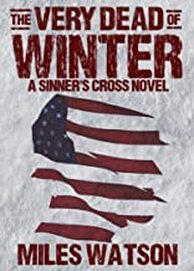
Having recently read Peter Caddick-Adams’ excellent account of the Battle of the Bulge (as it was called by the Allies), in Snow and Steel: Battle of The Bulge 1944-45 I was keen to see what Miles Watson, the author of “The Very Dead Of Winter” would make of telling a fictionalised account.
For a start, had he done his research? It turns out that he had, and I am happy to accept as poetic licence any differences between the known facts and the story as told in this book. In his historical notes at the end of the book, Miles Watson does mention that he has strayed from the known facts in one or two places. But there is a lot more to this book than just the historical accuracy. It is a really great read. So, the setting. It is December 1944 in the Ardennes forest on the borders between Germany, Belgium and Luxembourg. After fighting their way from Normandy, the American Army is pausing for breath and the bad weather doesn’t encourage campaigning. But the Germans have other ideas. Hitler’s latest master plan is to launch a surprise attack through the Ardennes, just as his armies did so successfully in 1940, aiming to reach the port of Antwerp and cut the British in northern Belgium off from their American allies in the south. Without an ability re-supply, the British would have to surrender and without their ally on their northern flank, the Americans would have to stop to re-group and re-position their already stretched forces. That hiatus, so Hitler thinks, will allow him to concentrate on defeating Russia in the east before suing for peace in the west.. Hitler called it Operation Wacht am Rhein (watch on the Rhein), but it had been quietly renamed Operation Herbst Nebel (Autumn mist). It is one of the coldest winters for years and the weather is so bad the Allied air forces are grounded, giving the German Army a much needed advantage. The story is told from three different points of view. The first is Top Sergeant Edward T Halleck, a former cowboy and rodeo rider who has been in combat since the American landings in Morocco in 1942. Wounded in the vicious fighting in the Hȕrtgen Forest, Halleck deserts from his hospital bed but, unlike other deserters, he isn’t running away from the fight, he is trying to get back into it. At which point he is arrested by MPs and taken before a General, who decides a hero like Halleck is just what his inexperienced men need to see in order to bolster their fighting spirit. Halleck is sent to tour the front line and arrives just in time to get caught up in the opening attacks of the battle. The second point of view is from Second Lieutenant Robert O Breese, Halleck’s former green-as-grass platoon commander. He, too, was sent to hospital after being in the Hȕrtgen, but he is what the American Army calls a Section 8. In other words he is mentally ill. Breese disputes this with his psychiatrist and persuades him to let him return to battle. Thanks to an exhausted truck driver, Breese is involved in a crash that leaves him the only survivor, at which point he decides to launch a one man revenge campaign on the Germans who had destroyed his platoon in the Hȕrtgen. The final point of view is that of OberstLeutnant (Lieutenant Colonel) August Cramm. He is a career soldier from a family of career soldiers that goes back almost a thousand years. He has lost an eye and an arm to the war already and knows his chances of survival are slim. As the Intelligence Officer of a Volksgrenadier division, he makes it his job to try to prevent unnecessary loss of life amongst the soldiers of his division, despite the profligacy of the Divisional commander. Once a believer in the German cause, now he is cynical, but is as determined to do his duty as ever he was. Each chapter takes turns to show us how the battle was fought from the three different points of view. However, this book isn’t about grand strategy, it’s about the soldiers who fought the battle and the loss of life and cruel conditions that the combatants had to endure. It’s also about the chaos and mistakes in decision making that nearly led to a disaster for the Americans and eventually did result in disaster for the Germans. A map of the battlefield would have helped, in order to picture where the three different characters are, but that is a minor quibble. History tells us the outcome of this battle, but the questions that readers like me will be asking is “which of these three men, if any, will survive the battle?” and “What lasting effect will the battle have on them if they do survive?” But I’m not going to spoil the book by telling you. The three main characters are well rounded and believable. From the half-crazy Breese to hard bitten Halleck and the cynical Cramm, we get a good feel for what the battle did to the soldiers. At times I felt myself shivering from the cold even as the sun shone outside my window. I could smell the explosives and the powder, the blood and the guts. Time flew by as I immersed myself in the story and it is rare that a book has that ability to absorb me so deeply. The pace of the story is almost exhausting, and I felt almost as tired as Watson’s characters at times. I was torn between giving this book 4 or 5 stars. There are quite a few typos, eg the word ‘all’ loses its second l on many occasions and there are many others. But the sheer skill of the story telling far outweighs these minor flaws, so 5 stars it is. If you are a lover of historical fiction, a lover of military themed fiction or you just love a bit of action and adventure, then this book is definitely the one for you. I have no reservations about recommending it to readers of this blog. To find out more about “The Very Dead of Winter”, by Miles Watson, just click the link below. 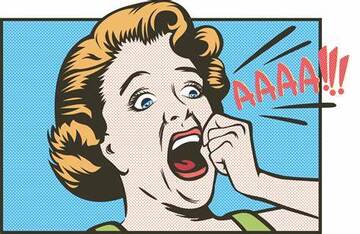 We’ve been hearing a lot about the ability of AI to write books, but is it something that indie authors really have to be frightened about? This is a difficult assessment for an author to make. We see this as something that is going to undermine our talent, so we fear it. When we fear something, we never take a positive view of it, so any assessment that we try to make isn’t going to be objective. I’m not an expert in AI, but I am an author (as well as a publisher) so I want to try to understand this issue better, so I can make an objective assessment of how big a threat AI is to our profession.  From a commercial point of view, having a computer programme write novels is an attractive prospect for publishers. Computer programmes, once paid for, don’t need to be paid again. If they can create a few books that sell well, they will have paid for themselves and after that all future books are pure profit. If the programme is producing quality product first time, every time, you also don’t have to pay editors or proof readers. With AI also capable of producing quality artwork, cover design is also something that doesn’t have to be paid for. We know that last example is true, because we use a commercially available design package to create covers from images we purchase the rights for on-line. 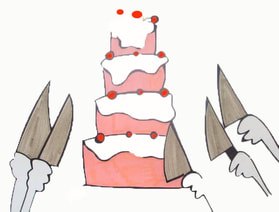 We can also be sure that there are plenty of opportunists in the world who will use AI to create books which they will then try to sell, pretending that they have created the work, even if it is poor quality Even if people don’t like the book, the “author” can repeat this trick many times over by publishing more books under different names. There are probably authors doing this already with books they really did write themselves. AI will just make it easier for them. It is possible to detect books written by AI, using the right tools. However, as AI becomes more advance it is getting harder to tell the difference between AI written work and “the real thing”. 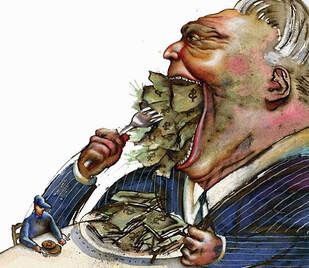 Don’t expect retailers to intervene here, because all they are interested in is their share of the sales income. We know this because of some of the rubbish that is sold on their websites currently. There is one advantage that human writers have that AI doesn’t. According to Stanford University researchers, AI doesn’t understand the purpose of books. While it can develop a plot to fit the description input by the “author”, the AI system may put in unexpected twists that means the resulting output doesn’t actually make sense in logical terms. The AI “knows” that readers like plot twists. What it doesn’t know is that the plot twist has to make logical sense. In an AI book Character A may turn out to be the murderer, but the logic behind them carrying out the murder may not make sense to us humans; it just has to make sense to the AI programme because it is a plot twist.  Where AI does help the author is in correcting grammar, punctuation, syntax etc and suggesting synonyms that the author may not have considered. That can make a poorly educated writer with good story ideas into a better writer. In other words, AI fulfils the role of a text editor. If you are a text editor reading this, you may want to consider a career change because that sort of AI is already with us and is being used. Autocorrect and Grammarly have been around for decades and they are just the tip of the AI iceberg. And there is really no way to detect that sort of AI if you haven’t seen any of the author’s uncorrected efforts. Even then it isn't always obvious to the reader. There is an area where AI is of considerable advantage and that is in content writing. Writing content for website landing pages, blogs, advertising copy etc can produce adequate work quickly and more cheaply than employing a content writer and a lack of originality isn’t a factor. If that is your profession then you, too, might want to consider your future. Where AI fails is from where it takes its input. In order to “create” a book, it analyses sources from across the world wide web and combines it together to create a story that meets the criteria for the book that the “author” has set. For example, to create a fantasy novel it will analyse existing fantasy novels of a similar type and then use the tropes and vocabulary found in those books to “create” a new novel..  This introduces the risk of plagiarism. Because the distance between “analysing” and ”copying” is a very small one in computer terms. As lawsuits in the past have proven, it only requires a few similarities in a plot for a court to find in favour of the plaintive. Dan Brown has been sued for plagiarism three times for his Robert Langdon books, though none of the lawsuits have yet been successful. But lawyers made huge amounts of money out of those cases. Q.R. Markham, a.k.a. Quentin Rowan, copied from literally hundreds of books in order to “create” his debut novel “Assassin of Secrets”, which is pretty much what AI does. The book had to be recalled by its publisher after only a week because the similarities with other novels were soon identified. Rowan had to repay his advance of $15,000 and reimburse the publisher for their costs. Are those sorts of financial risks enough to prevent AI from being used to write novels? Probably not. We know that there are all sorts of fakes and charlatans using the internet to make money and they will take the risk, hiding their identities behind dummy corporations or hiding behind countries that aren’t very co-operative with the international justice system. On-line retailers will have to take action to take down books that have been proven to plagiarise other work. However, some will wait until the courts order them to do so. In the meantime, the “author” will have launched more books under different names, which means the retailers will always be playing catch-up. Amazon are ahead of the game in some respects. They do flag work that directly quotes the work of other authors if it exceeds the “fair use” criteria. 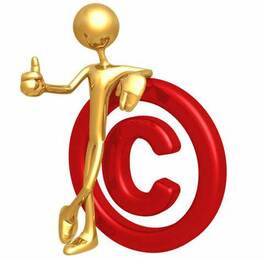 Fair use (aka fair dealing), for those who are unfamiliar with the term, is an exemption from copyright law which means that authors can use extracts of other people’s work in critiques, reviews and quotes etc. There are also further exemptions from copyright law for the purpose of parody, satire and in teaching materials, but let’s not get into those here. So, back to the original purpose of my blog: do authors have to be fearful of the ability of AI to write books? The short answer is yes. If not now, then in the near future. We know it is possible and therefore it is another form of competition in an already crowded market.  We know that it is possible to identify work written by some older versions of AI programmes. But how many readers are going to bother doing that sort of analysis if the retailer hasn’t done it for them? Quality isn’t a threshold for some readers. We already know this because some pretty poor books have become bestsellers. All we can do is maintain our own high standards of quality in the hope that readers will continue to buy our books. I think that the authors at greatest risk are those who are signed to "pulp fiction" publishers for whom quantity takes precedence over quality. If quality isn’t the overriding criteria for publication, those authors are at the greatest risk of losing their publishing contracts. But the one thing we know about computer software is that it gets better and better over time. The disadvantages that AI has at the moment will be addressed.  The illogical plot twists will be eradicated by teaching the systems what a logical plot twist looks like. The overall quality of the “writing” will be improved. The risk of plagiarism will be programmed out. So, if you are an author who is just dipping your toe in the water you shouldn’t plan on having a long career. You certainly shouldn’t be planning on making a lot of money from your work because increased competition squeezes everyone. But it is the text editors, proofreaders and cover designers who probably have the most to fear in the short term. AI can eradicate errors from documents, so there is less work for them to do and AI can design covers that are indistinguishable from human created ones.. But we at Selfishgenie promise not to publish any AI books knowingly. The trouble is, they will get harder to identify, so we may do it inadvertently, because it will be the human behind the AI written book that will sign the contract. But we will work on our “due diligence” to try to address that.  Are there any rays of hope for the Indie author when it comes to AI? I think there are. At the basic level, AI is a computer programme and therefore if you ask it to do something it will always do it the same way because it knows no other way. That is going to lead to a lot of similarity in books written by AI systems. Let me give you an example. Take the phrase “Sunlight dappled the meadow and the gentle breeze caused the heads of the wildflowers to dance.”. If I asked each of you reading this blog to input that into an AI writing system, what would come out the other end would be a lot of stories that are a variation on that theme, all of which would be very similar. If, however, I asked each of you to continue writing from that quote, without using AI, what I would get back would be lots and lots of different stories. That is because you will each interpret the quote in a different way and then you will use your creative abilities to come up with something that is original. Whereas AI draws its knowledge from what is already out there in the world. In other words, it learns from what has gone before. It doesn’t have original ideas, the way people do. If you are one of those authors who believes that readers want "more of the same" and therefore write books imitating (but not copying) other authors, then you may need to re-think your strategy, because AI can give readers that. But if you are an author who takes pride in being original, there is some hope for you because Ai isn't big on originality. The second ray of light is in marketing. AI book writing systems don’t do marketing. As Indie authors, we all know that marketing our books is very often harder than writing them. But the sort of people who will use AI to write books don’t want to do hard work. If they did, they’d be proper authors like us. Which means that they won’t want to do the marketing either and if you don’t market a book, it won’t sell. The only way to get anyone’s attention would be to sell the book for 99p so it turns up amongst the special offers, and there’s no money in that, so it wouldn’t be attractive to the person who is trying to make money by using a computer to write the books. It will take those people time to learn that, but that's their problem, not ours. The main threat here would seem to be the person who knows a lot about marketing but doesn’t know much about writing books. They would be prepared to do the marketing work required to sell an AI written book. But lazy people are no threat, with or without AI. If you have enjoyed this blog, or found it informative, then make sure you don’t miss future editions. Just click on the button below to sign up for our newsletter. We’ll even send you a free ebook for doing so. |
AuthorThis blog is compiled and curated by the Selfishgenie publishing team. Archives
June 2025
|


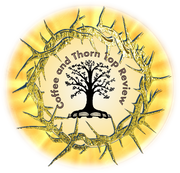
 RSS Feed
RSS Feed